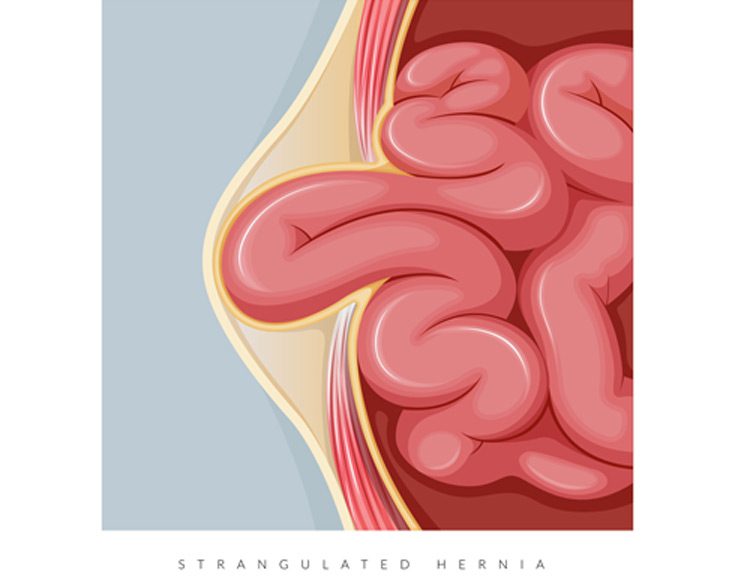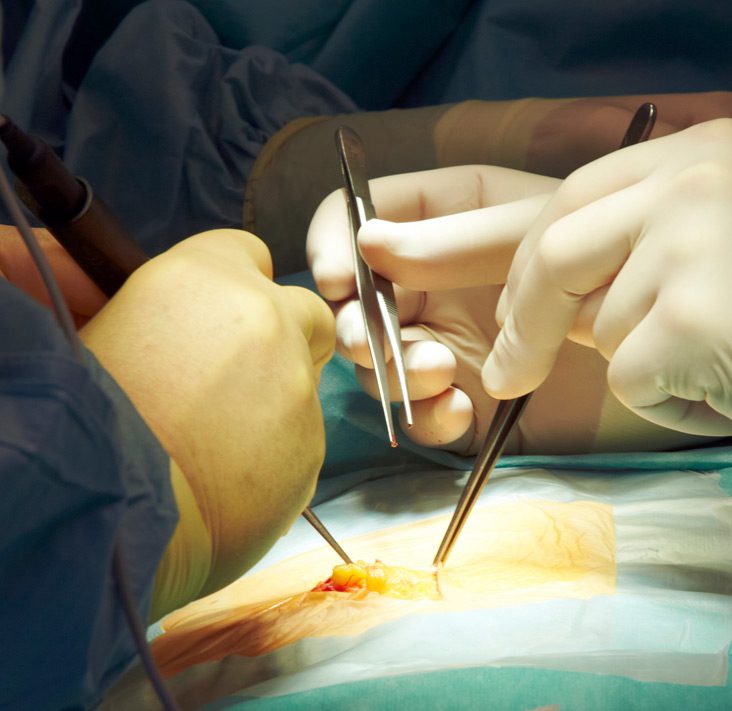
The prevalence of hernias, a protrusion of tissue, is fairly high among obese and overweight patients. Thus, hernia repair is commonly performed during bariatric surgery. There are many different types of hernias, each one with a unique name tied to its location.
Epigastric Hernia
An epigastric hernia is located in the epigastric region, which is the area around the sternum and belly button near the ribcage.
To treat an epigastric hernia, patients may need outpatient laparoscopic hernia repair. During surgery, the physician uses special instruments to place sutures and close the opening in the abdominal lining. Incisions may be made on either side of the hernia.
Femoral Hernia
A femoral hernia is located around the groin or upper thigh. Patients with a femoral hernia have an internal organ or tissue protruding through the femoral canal.
To treat a femoral hernia, patients may need open or laparoscopic surgery.
Hiatal Hernia
A hiatal hernia occurs when the upper portion of the stomach pushes through the diaphragm into the chest area.
If patients don’t experience improvement with medication, they may need surgery to rebuild weakened or thin esophageal muscles and reposition the stomach.


Incisional Hernia
An incisional hernia occurs when the abdominal muscles weaken.
The two surgeries that may be done to treat an incisional hernia include an open hernia repair and a laparoscopy. During surgery, the intestines are pushed back into the abdomen and the muscle wall is fully repaired to strengthen it.
Inguinal Hernia
When an intestinal segment is pushing itself through a weak spot in the abdominal muscles, patients may experience a bulge in the abdominal area, called an inguinal hernia.
If a patient experiences unpleasant symptoms from an inguinal hernia, their physician might recommend a watchful waiting approach. The doctor might also apply manual pressure to reduce the bulge.
In some cases, patients may need laparoscopic surgery or open hernia repair.
Sports Hernia
Because a sports hernia forms in the area just above the groin in the lower abdomen called the inguinal canal, patients often assume they’re experiencing a muscle strain or groin pull.
To manage symptoms, patients may apply ice to the affected area, rest from certain activities or sports, take anti-inflammatory medications (NSAIDs), and try various forms of physical therapy.
Patients that need surgery to treat their sports hernia may undergo minimally invasive laparoscopic surgery.
Spigelian Hernia
Spigelian hernias are located in the spigelian fascia, which is a layer of tissue that separates the rectus and lateral oblique muscles within the abdomen.
During laparoscopic surgery, the surgeon will place sutures or mesh with the help of a small camera inserted through small incisions.
Umbilical Hernia
An umbilical hernia forms when part of the intestine protrudes through an opening in the abdominal muscles.
Though the condition is most common among infants and children, adults may also develop an umbilical hernia. Surgery is necessary to reduce the risk of complications. The two main types of surgical procedures that may be done to treat an umbilical hernia are open and laparoscopic.







